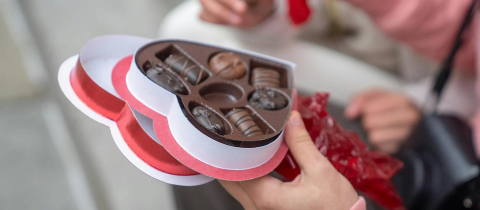The secret lies in the chemical behaviour of beta-fructofuranosyl-alpha-D-glucopyranoside. Don't worry, that's just the chemical name for sucrose, or ordinary table sugar. Sucrose is a "disaccharide," meaning it is composed of two smaller molecules, namely glucose and fructose, that are chemically bound together.
When we eat sucrose, an enzyme in our digestive tract breaks the molecule down into glucose and fructose which are then absorbed into the bloodstream. This same enzyme, “invertase”, is also produced by certain yeasts which use sucrose as a source of food, and can be isolated from the yeast by chemical techniques. Invertase is part of the secret behind creamy chocolates. The other important fact is that glucose and fructose are more soluble in water than is sucrose. So the idea, as worked out by the American chemist H.S. Paine in 1924, is to make a paste of sugar with a little water to which invertase has been added. There is not enough water to dissolve the sugar, and the fudge-like mass can be coated with melted chocolate.
Over a period of several weeks, the enzyme breaks the sucrose down into glucose and fructose, which being more water soluble can now dissolve in the small amount of water available. The result is a chocolate with a liquid centre! If desired, the original paste can even be moulded around a maraschino cherry to produce the delicacy known as a "Cherry Blossom."
If we base our decision about which chocolate to eat first solely on chemical ingenuity, then liquid centre chocolates get the call. The second decision we have to make is a harder one. How many of these do we eat? Not too many. Otherwise you have to start contending with the body’s conversion of beta-fructofuranosyl-alpha-D-glucopyranoside into triglycerides. Better known as fat.
(PS. If you think I have given away the secret of how they get the caramel into the Caramilk bar, I haven’t.)
Want to comment on this article? Visit us on FB!







